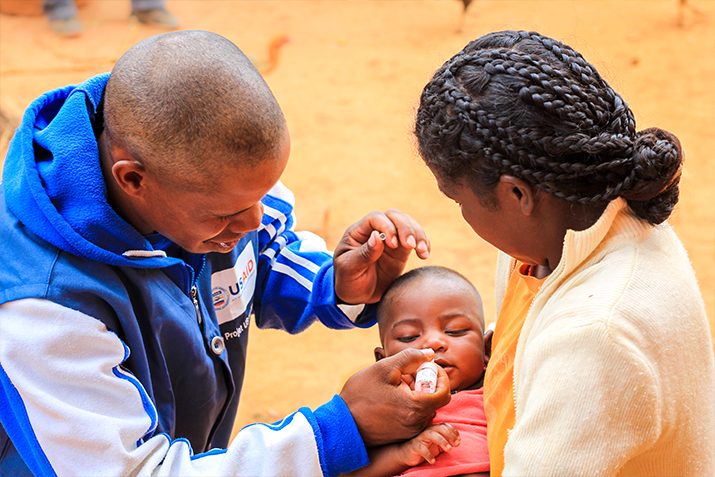Photo Essay: Community Health Volunteers Key to Ending Polio in Madagascar
Photo Essay: Community Health Volunteers Key to Ending Polio in Madagascar
Story and photography by Samy Rakotoniaina

In the late 19th and early 20th centuries, Poliomyelitis, or polio, was a greatly feared scourge of the industrial world. It would paralyze hundreds of thousands of children every year. Once effective vaccines were introduced in the 1950s the number of cases of polio dropped dramatically and the virus was eliminated in many countries, but in some places, it still remains a real threat.
Polio is an infectious viral disease that is transmitted from person to person and can lead to paralysis, respiratory failure, even death. The polio virus easily spreads in areas with poor sanitation. Vaccination is the most reliable way to prevent polio and to protect children under five, who are the most vulnerable.
The virus was wiped out in Madagascar 2005 but reappeared in 2014. Since then, Madagascar’s government and health partners, including the World Health Organization, United Nations Children’s Fund, and the United States Agency for International Development, have held multiple vaccination campaigns across the country.
At the forefront of these vaccination campaigns are community health volunteers, or CHVs. These are people who volunteer their time to become community health care leaders, especially in remote villages where basic health facilities don’t exist and a doctor may be a day or more of travel away. These CHVs are supervised by Ministry of Public Health health center professionals, and they receive special training that allows them to provide basic health information and services. CHVs are major contributors to Madagascar’s efforts to end polio for good.

CHVs promote and teach healthy behaviors in their communities, including how to prevent communicable diseases like polio. They improve sanitation and hygiene at the village level through door-to-door home visits and through group education. With the support of village leaders, CHVs also conduct regular clean-up sessions with local communities, ensuring that people live in a sanitary, healthy environment.

Trained and supervised by heads of health centers, CHVs help reach isolated populations with primary health care services, while also contributing to epidemiological surveillance activities by actively searching for cases of acute flaccid paralysis (the primary polio symptom). In remote communities, some children fail to finish a full series of immunizations, so CHVs search for children who have not been fully vaccinated and refer them to the closest health center to complete their vaccinations.

Two days prior to a campaign launch, CHVs serve as community mobilizers. Working in partnership with government-run health centers they inform parents about the importance of the polio vaccine and the upcoming campaign, and identify the number of children to be immunized in target areas.

During a polio campaign, some CHVs also work as vaccinators, going door-to-door in preselected communities to administer the polio immunization to every child. Cases of vaccine refusal are carefully handled with community leaders or the head of the local health center.

Other CHVs contribute to the campaign as data recorders, working in pairs with vaccinators and ensuring that individual immunization data is properly entered into the Ministry of Public Health’s information system.

CHVs play a critical role in efforts to strengthen Madagascar’s health system, as they continuously promote healthy behaviors, carry out epidemiological surveillance, identify and refer children to complete their routine vaccinations, and actively support immunization campaigns. Because of the government’s effort and the support of health partners like the USAID Mikolo project to immunize every child, Madagascar is on the cusp of polio eradication.